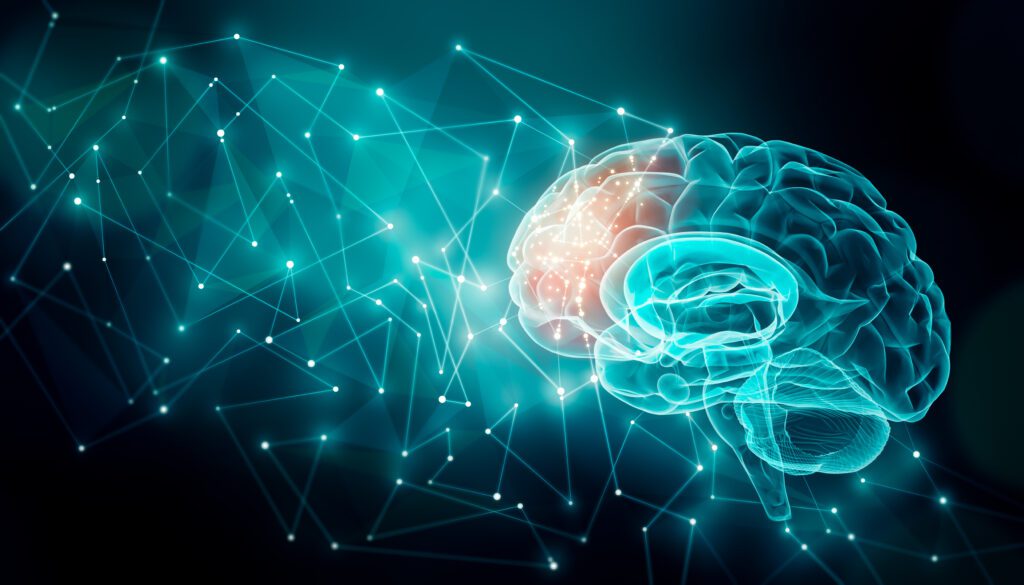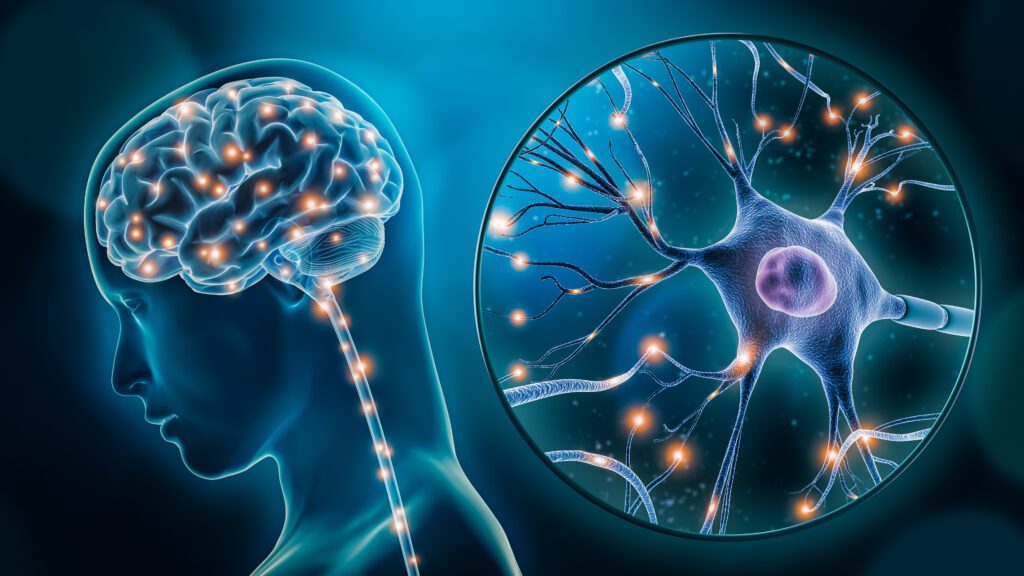Not that long ago, “brain stimulation therapy” meant shock therapy or electroconvulsive therapy (ECT). While ECT is still a treatment for depression, there are other types of brain stimulation therapies available today that can treat depression and other mental health disorders.
According to the National Institute of Mental Health (NIMH), brain stimulation therapies involve activating or inhibiting the brain directly with electricity. “The electricity can be given directly by electrodes implanted in the brain, or noninvasively through electrodes placed on the scalp. The electricity can also be induced by using magnetic fields applied to the head.”
Brain stimulation therapies are less commonly used than medication or psychotherapy; however, they can be highly effective in treating depression and other disorders that do not respond sufficiently to other treatments.

Electroconvulsive Therapy
ECT is a medical device treatment that activates a brief set of seizures to stimulate the brain and affect neural functioning. Originally used to treat schizophrenia, during the 1960s-1980s ECT was found to be even more effective for treating mood disorders, particularly depression.
Today, it is considered one of the most effective treatments for severe depression and for treatment-resistant cases, where other first-line treatments such as selective serotonin reuptake inhibitors medication (SSRIs) or psychodynamic therapy do not bring sufficient relief.
That said, ECT does hold several disadvantages. The treatment requires the use of anesthesia, making the recovery process longer and more complex. The use of anesthesia also means that patients cannot drive themselves immediately following treatment. ECT can also cause significant side effects, including short-term memory loss, which can deter patients from trying it.
The NIMH describes ECT treatment as follows: A patient is sedated with general anesthesia and given a muscle relaxant to prevent movement during the procedure. Electrodes are placed at specific locations on the head through which an electric current passes through the brain, causing a seizure that lasts less than one minute. Five to 10 minutes after the procedure ends, the patient wakes up and can resume normal activities after the anesthesia wears off.
A course of ECT usually is administered three times a week until the patient’s depression symptoms improve, which often takes six to 12 treatments. Maintenance ECT treatment may be required. Patients often combine ECT with antidepressant medication.
What is Vagus Nerve Stimulation?
Vagus nerve stimulation is an invasive procedure using a device to stimulate the vagus nerve with electrical impulses. It was originally developed to treat epilepsy, but scientists found that the device also affected areas of the brain involved in mood regulation. According to the NIMH, “The pulses appeared to alter the levels of certain neurotransmitters (brain chemicals) associated with mood, including serotonin, norepinephrine, GABA and glutamate.”
In 2005, the U.S. FDA approved this type of brain stimulation for treatment-resistant depression.
Vagus nerve stimulation requires a device to be surgically implanted under the skin on the chest, with a wire threaded under the skin connecting the device to the left vagus nerve. When activated, the device sends electrical signals along the left vagus nerve to the brainstem, which then sends signals to the brain.
Surgery usually takes an hour or more with an incision made on the chest or armpit and another incision on the left side of the neck. A pulse generator battery is implanted in the upper left side of the chest. A lead wire connects the pulse generator to the left vagus nerve in the neck.
The Mayo Clinic notes that research is mixed on the benefits of vagus nerve stimulation for depression, with some studies indicating that improvement of symptoms can take months and it does not provide relief for all patients.
There are newer noninvasive vagus nerve stimulation devices available in Europe that do not require surgical implantation; however, they have not been cleared by the FDA in the U.S. to treat depression.
Vagus nerve stimulation is often used for severe depression patients who have not responded to antidepressant medications, psychotherapy, and ECT.

rTMS: Repetitive Transcranial Magnetic Stimulation
Repetitive transcranial magnetic stimulation (rTMS) and transcranial magnetic stimulation (TMS) are interchangeable terms to describe a noninvasive brain stimulation technique that uses electromagnetic fields to stimulate particular areas of the brain. Repeating this process has been found to reduce the severity of symptoms for certain mental health conditions such as depression.
There are currently two forms of TMS on the market, usually referred to as traditional TMS and Deep TMS™. Each works in its own way to treat the targeted condition.
Traditional Transcranial Magnetic Stimulation (TMS)
Traditional transcranial magnetic stimulation relies on a standard figure-8-shaped device to convey its electromagnetic pulses to the brain. Though found to be effective, the focal nature of traditional TMS can run into targeting issues and risk missing important brain structures during treatment.
Traditional TMS has been FDA-cleared since 2008 to treat depression.
Deep Transcranial Magnetic Stimulation (Deep TMS) addresses some of the issues raised by its predecessor, traditional TMS. Specifically, Deep TMS relies on patented H-Coil technology to transmit its electromagnetic pulses from within a specially designed helmet. The electromagnetic pulses reach wider and deeper swaths of the brain, avoiding the targeting issues of traditional TMS.
Due to its clinically demonstrated safety and efficacy, Deep TMS was FDA-cleared to treat major depressive disorder in 2013. The treatment is also FDA-cleared to treat anxious depression, obsessive-compulsive disorder (OCD), and smoking addiction. Deep TMS is CE-marked in Europe as a treatment for the above-mentioned as well as several other conditions.
TMS is sometimes compared to ECT because both treatments utilize electrical currents. However, TMS and Deep TMS are noninvasive, do not require anesthesia, and do not usually lead to any long-lasting or adverse side effects. TMS and Deep TMS can be combined with other forms of treatment, such as psychopharmacology or psychotherapy, and can be incorporated into the patient’s daily schedule.
A typical course of Deep TMS lasts for approximately six weeks, with most patients reporting an improvement in symptoms about half-way through the course of treatments. During each treatment session, a patient wears a cushioned, cooled helmet containing the H-Coil technology. As the H-Coil is activated, the patient feels a tapping sensation on their head. Each treatment session lasts approximately 20 minutes (or less if the healthcare provider is using intermittent Theta Burst Stimulation), with patients able to drive themselves afterward.
There are additional brain stimulation therapies in research stages, however they have not yet been cleared by the FDA to treat depression patients.
If you or someone you love suffers from depression and medication and therapy are not providing sufficient relief, talk to your healthcare provider about options such as Deep TMS.
Learn more about Deep TMS: